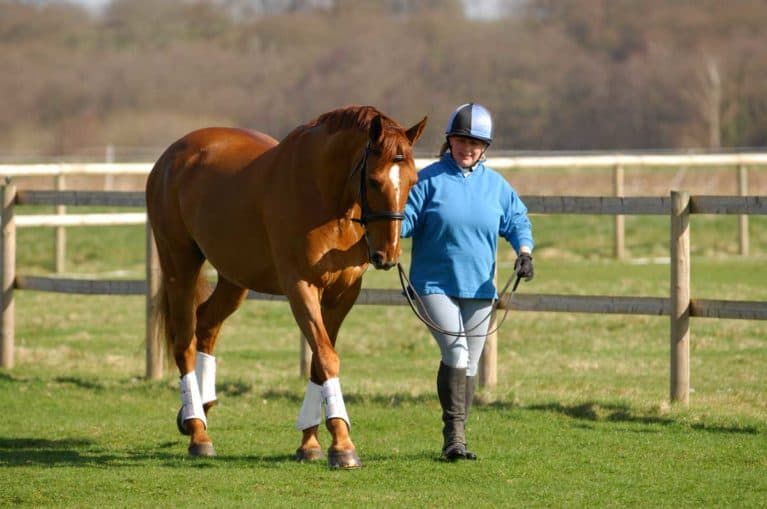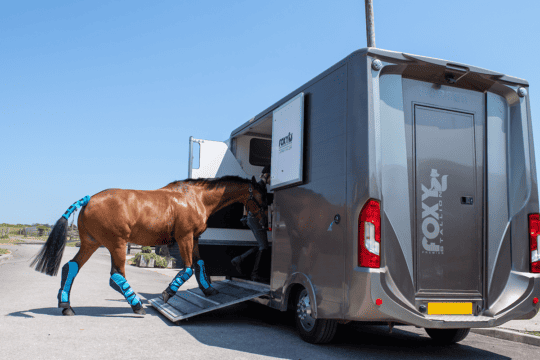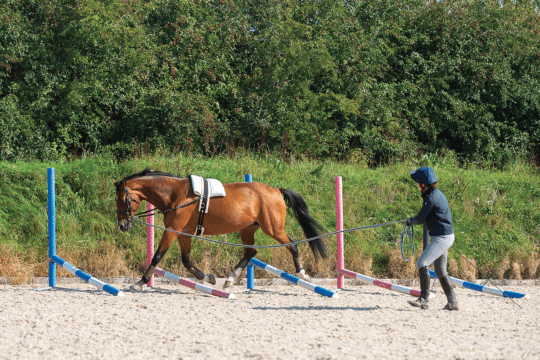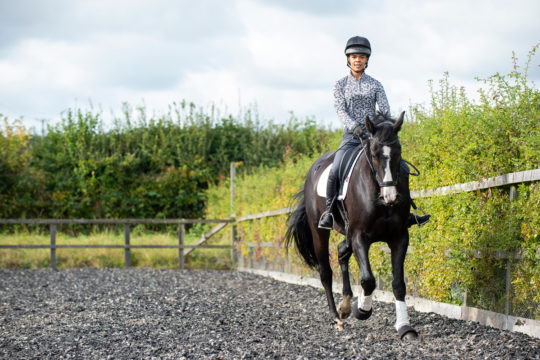Ensuring your horse is as polite on the ground as he is under saddle is essential to not only a good working relationship, but also to keeping you and your horse safe

We all spend hours cultivating and improving our horses’ way of going under saddle, but how much time to you spend with him on the ground? Beyond leading him to and from the field and perhaps the odd lunge if he’s fresh, it’s pretty rare that we spend time simply working on our horse’s manners and responsiveness on the ground. However, a horse who’s polite to work with is a blessing, and you’ll thank yourself later for putting the hard work in now.
Safety first
Before you start thinking about the exercises you’ll try with your horse, you need to set the scene. Always wear a correctly fitted hat, as well as gloves and sturdy boots when doing groundwork of any kind. Shut any gates to the yard and avoid times of high traffic around the yard to avoid potentially dangerous distractions.
TOP TIP
If you want to start your training in a bridle, remove the reins and use a leadrope looped through the bit and clipped to the opposite side, or a rein connector, to give you more control.
Follow my lead
Leading can be a big hang-up for many owners – how many do you know who have to lead their horses in a chain or bridle? Leading your horse shouldn’t be stressful, and with our easy step-by-step guide, your horse will be on side in no time at all…
- Always begin in an enclosed area just in case anything goes wrong. Stand next to your horse’s shoulder, with the rope slightly slack and your hand a few inches down the rope and away from the clip.
- Ask your horse to walk forwards with a positive step and using your voice. He should respond immediately, allowing you to remain next to his shoulder as you walk, but if he doesn’t, don’t be tempted to drag him. Either give him a light tap with a schooling whip in your outside hand or ask are friend to encourage him from behind – but make sure they stand slightly to the side and within his field of vision to avoid getting kicked.
- When you ask your horse to turn, always do so away from you to avoid being trodden on or knocked over. Stick to his shoulder and use your body to help move him around.
- He needs to be off your aids in all directions, so practise stopping, too. If he won’t stop, use the fence or wall to help you to start with, gradually increasing the distance away from the barrier that you ask him to halt.
- As you grow in confidence, you can begin to work in more open spaces to put your training to the test.
You spin me right round
With some horses, lungeing is a straightforward way to get rid of any freshness before a ride or provide a quality workout without the weight of a rider. However, ensuring it’s a safe experience is paramount – we’ve all heard horror stories of friends who’ve been kicked while lungeing. Here are some of our top tips to staying safe on the lunge…
- ensure a friend, yard manager or fellow livery knows what you’re doing. You wouldn’t go for a hack without letting someone know, so stick to the same rule for other work you do with your horse, too
- stay up to your horse’s shoulder and try not to get left behind him. It’s all too tempting to get back and give your horse a chase if he’s feeling a little unenthusiastic, but that’s why we have aids like lunge whips and our voices – you don’t need to risk a kick
- refine your aids in walk before you progress to trot and canter work if you can. Knowing your horse will stop and go on command will give you confidence and keep you safe when you start asking more
- work on keeping your horse away from you – he shouldn’t be coming in onto a 10m circle if you’re asking for a 20m one. The closer he comes the more at risk you are of being within kicking distance
- always lunge in a safe, enclosed area to avoid creating a dangerous situation on the yard should your horse get loose and ensure you’re wearing gloves and an up-to-standard riding hat
Foot perfect
Our farriers are long-suffering advocates for our horses’ welfare, so ensuring our horses are well-mannered when the farrier visits is the least we can do to repay them. The more you can do to desensitise your horse, the easier his job will be. Here’s how…
- ensure your horse is comfortable with having his feet picked out by you and others on the yard. If he won’t tolerate this, he certainly won’t put up with your farrier trimming or shoeing him
- if you can, borrow a rasp and practise running it over your horse’s feet. You don’t have to actually rasp any horn but this will help your horse become accustomed to the sound and sensation
- keep your horse on the yard when others are being shod to help him get used to the sounds and smells, as the unusual burning scent can prove a problem
- if you’re really struggling, speak to your farrier about whether your horse could stand to go barefoot. Many thrive without shoes, and your horse could be one of them
TOP TIP
If your horse is really reluctant to have his feet picked up, and even your yard manager or instructor trouble, it’s worth consulting your vet to make sure he’s not uncomfortable.
A patient and well-mannered horse makes all the difference when it comes to enjoying your hobby. Knowing he won’t barge or pull will keep you safe as well as give you confidence in your ability manage him effectively, and you’ll soon be receiving compliments about his good behaviour.








